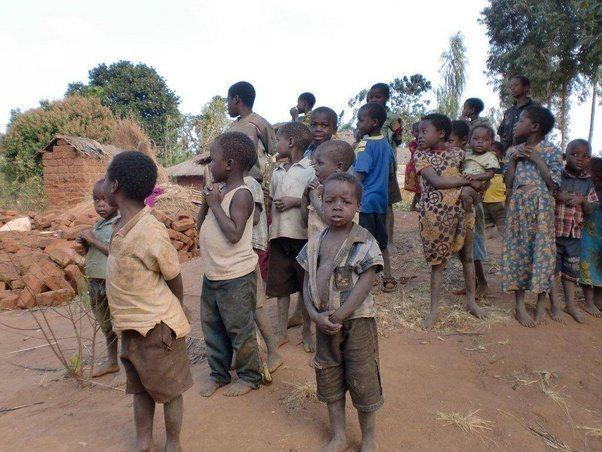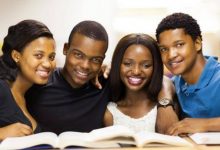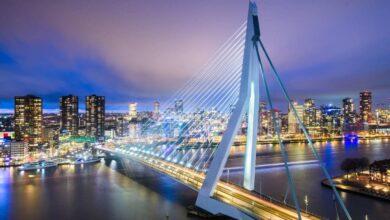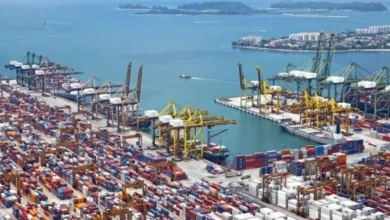
Top 15 Low-income Countries in Africa
Low-income Countries in Africa – Africa is home to some of the poorest countries in the world. While poverty rates have declined, many nations in Africa continue to face economic hurdles from weak governance, corruption, and unfavorable climates. Information Guide Nigeria
Here we examine the 15 poorest countries in Africa based on GDP per capita, as well as key challenges facing their development.
👉 Relocate to Canada Today!
Live, Study and Work in Canada. No Payment is Required! Hurry Now click here to Apply >> Immigrate to CanadaRead Also: Top 10 Countries with high illiteracy rates in the World
The Top 15 Low-income Countries in Africa Are:
1. Burundi
Burundi has the lowest GDP per capita in Africa at just $261. It is plagued by political instability, corruption, and a lack of economic freedom. Over 80% of Burundians rely on subsistence farming, while frequent droughts and floods hurt agricultural productivity. Ongoing political tensions and a civil war that ended in 2005 have hindered foreign investment and economic growth. Raising agricultural productivity, expanding manufacturing, improving education, and reducing corruption are essential for Burundi’s development. Low-income Countries
2. Malawi
Malawi has a per capita GDP of $622, with over half the population living below the poverty line. Corruption and patronage systems undermine economic progress. Rain-fed agriculture comprises nearly 40% of GDP. Environmental degradation, water pollution, and poor sanitation facilities hinders human capital development. Boosting agricultural productivity, expanding power generation, improving infrastructure, and confronting corruption are key priorities.
3. Niger
Niger has the world’s highest fertility rate, with a population growing four percent annually. This strains limited food and health resources. With a per capita GDP of $705, over 40% of Niger’s population lives in extreme poverty. Recurring droughts, desertification, and land degradation hurt agrarian livelihoods. Expanding healthcare access, girls’ education, agricultural productivity, and nutrition are crucial. Developing uranium resources, oil deposits, and renewable energy can also diversify Niger’s economy.
Read Also: Top 15 Countries with high infant mortality rates in Africa
4. Central African Republic
The Central African Republic has a per capita GDP of $729. It has been plagued by instability and conflict. Diamonds account for over half its exports but most locals are small-scale farmers. Poor infrastructure, legal obstacles, lack of access to markets and finance make expanding licit industries challenging. Improving security, governance, infrastructure, agricultural productivity, education, and the investment climate are essential steps. 15 Best Backlink Checker Tools for SEO Success
5. Madagascar
Madagascar has incredible ecological diversity but a per capita GDP of just $758. Over 70% live in poverty, especially in rural areas. Political instability between 2009-2013 severely damaged the economy. Agriculture, textiles and mining are the main economic activities but suffer from low productivity. Expanding infrastructure, power generation, and access to healthcare, education, and finance across rural Madagascar is crucial.
6. Mozambique
Mozambique has attracted foreign investment but its per capita GDP stands at $906. Over 45% of Mozambicans live below the poverty line. While the mining and gas sectors have gained foreign investment, youth unemployment remains high at 17%. Boosting agricultural productivity, fishing, manufacturing, vocational training, education access and power infrastructure can further inclusive development. Tackling corruption and financial mismanagement is also key. 10 best online psychology degree programs in North Carolina
👉 Relocate to Canada Today!
Live, Study and Work in Canada. No Payment is Required! Hurry Now click here to Apply >> Immigrate to Canada7. Liberia
Liberia has a per capita GDP of $934. 14 years of civil war ending in 2003 destroyed economic infrastructure and institutions. Major commodities like rubber and iron ore suffer from low global demand and prices. Expanding agricultural productivity beyond subsistence farming is essential. Improving power supply, roads, port infrastructure and education can also accelerate growth. Greater fiscal discipline and anti-corruption efforts are needed.
Read Also: Top 15 Least Developed Countries in the World
8. Guinea
Guinea has a per capita GDP of $1,138 yet over 55% live in poverty. Political instability and corruption has deterred foreign investment in rich mineral reserves. Weak infrastructure, price volatility, and insufficient vocational training constrain industrial mining. Diversifying the economy beyond mining by developing agriculture, fishing, and manufacturing is important, as is improving education and governance. NYSC Portal
9. Rwanda
Rwanda has rebounded since the 1994 genocide with per capita GDP reaching $1,222. However, over 60% of the workforce engages in small-scale agriculture. Fertility remains high at nearly 5 children per woman, straining land and education resources. Boosting urbanization, agricultural productivity, manufacturing, services, and high-value exports can accelerate inclusive growth. Expanding access to power, credit, and education across rural Rwanda is also important.
10. Ethiopia
Ethiopia has undergone rapid economic expansion but per capita GDP remains low at $1,292. Over 25% still live in poverty. Agriculture comprises nearly 40% of GDP, while manufacturing remains nascent. Droughts and conflict periodically disrupt development. Continuing to build transportation, power plants and ICT infrastructure can help manufacturing and exports. Expanding secondary education and vocational training is also essential. JAMB Portal
11. Mali
Mali has a per capita GDP of $1,358, with over 40% of Malians living in poverty. The economy relies heavily on rain-fed agriculture, rendering it vulnerable to climate change impacts. Instability in the north strains limited resources. Boosting agricultural productivity, fishing output, gold mining, vocational training and infrastructure development can accelerate broad-based growth. Improving healthcare and education access is also crucial.
Read Also: Top 15 Least Developed Countries in Africa
12. Guinea-Bissau
Guinea-Bissau has a per capita GDP of $1,358. Political instability and civil conflict have severely damaged economic infrastructure and institutions. Cashew nuts are the main export crop while over 60% of Bissau-Guineans engage in subsistence farming. Developing agricultural value-added industries, minerals extraction, fisheries, and tourism can drive growth and employment. Reducing corruption and bureaucracy is also key. JAMB Result
13. Uganda
Uganda has sustained high growth rates but per capita GDP remains low at $1,407. Over 20% live below the national poverty line. Rapid population growth strains public services. Key exports like coffee, tea, and minerals suffer from supply-side constraints and price volatility. Boosting productivity in agriculture, fisheries, manufacturing and mining through improved infrastructure, vocational training and access to credit and markets can catalyze job creation and exports. 200 romantic love message for her
14. Tanzania
Tanzania has recently sustained over 6% GDP growth but per capita GDP remains at $1,510. 32% of Tanzanians live below the poverty line. Poor infrastructure and regulatory burdens constrain business activity and investment. Developing the mining, tourism, agricultural, and telecom sectors can boost exports and employment. Improving port facilities, railways, roads and power supply is also important. Expanding secondary education and vocational training can develop human capital. 105 good morning messages
15. Benin
Benin has per capita GDP of $1,545. Agriculture accounts for over 25% of GDP but suffers from low productivity. Expanding access to markets, inputs, and finance for farmers and agro-processing could catalyze agricultural development. Developing mineral resources, infrastructure, power generation, vocational training and manufacturing can also provide employment opportunities. Improving healthcare and education access, especially for women and girls, remains essential.
Read Also: Top 15 Countries with high unemployment rates in Africa
Conclusion
In summary, Africa’s poorest nations predominantly rely on rain-fed smallholder agriculture but face risks from price fluctuations, resource scarcity, population pressures, and climate change impacts. Targeted investments and policies to drive agricultural productivity, develop manufacturing and high-value services, expand vocational training and infrastructure, improve healthcare and education access, harness mineral resources inclusively, reduce corruption, and enhance financial inclusion are central to the development of these disadvantaged African economies and their populations.
Check JAMB RESULT
Check and Confirm: How much is Dollar to Naira






